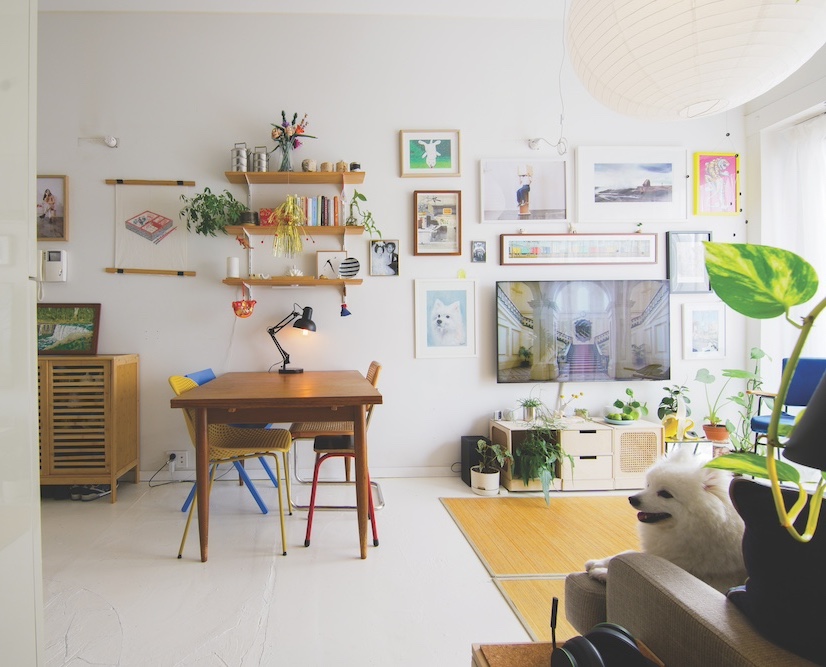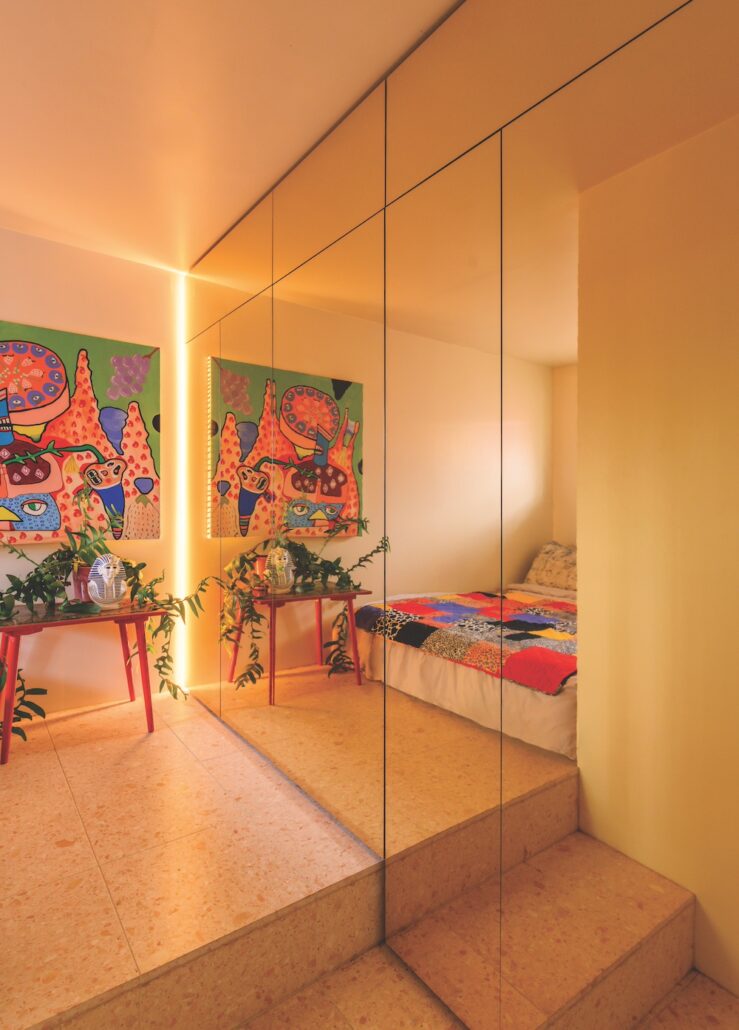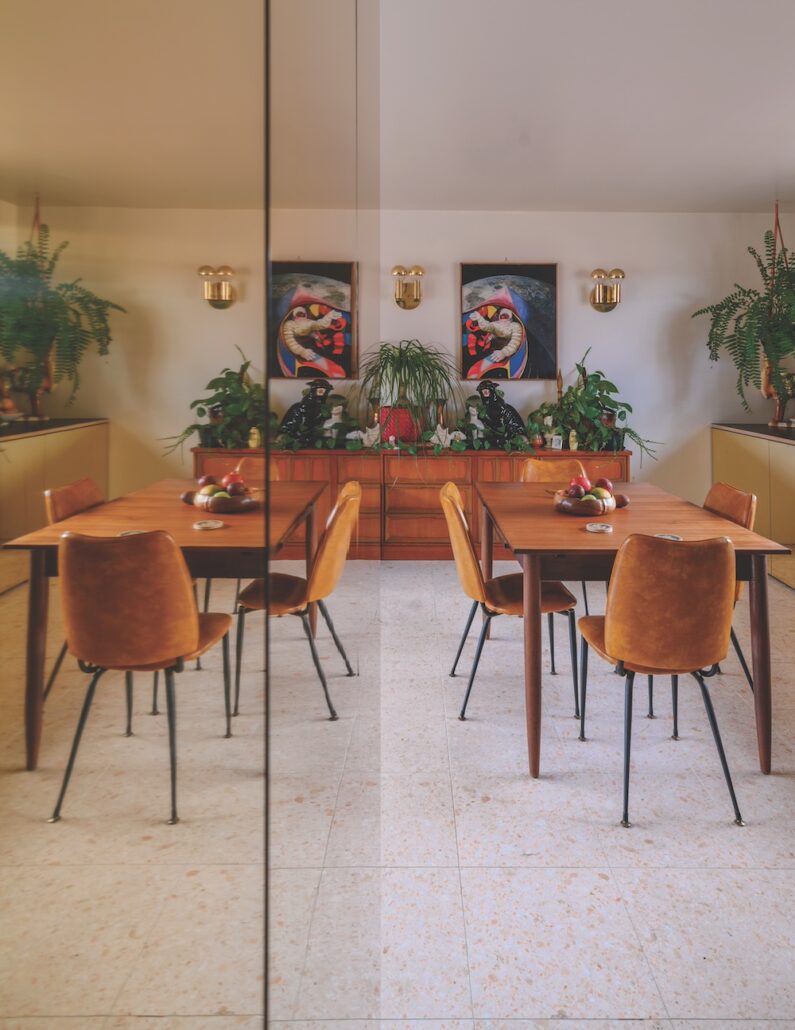Colin Chee from YouTube channel Never Too Small has seen a lot of small homes. Voted Best 5 YouTube Channel in 2020, Never Too Small tours amazing new interiors designed for small footprint living. No sooner have we sat down to chat about art in small spaces, than Colin is outlining his rules of hanging art: Large pieces of art on a wall should be 150 to 160cm above the floor. An artwork hung above a cabinet should be two-thirds of its width and at least 20 to 30cm above the cabinet. And if you group smaller works, they should be 10 to 20cm apart “so they still have the space to breathe without congestion”.
He knows what not to do as well. “In small spaces, people often use mirrors when they can’t afford real art. Or, they put small works on a wall. If I had a small painting, I would put it on a shelf with ornaments or with a flower. I also am not a fan of generic, mass-produced work. People are better off framing photos from their childhood. It’s more meaningful.”
But, when it comes to hanging art in his own tiny home — a 40 square metre studio in Melbourne — he chose to break those rules. Above the TV, his art wall made up of smaller pieces takes the form of an inverted top-heavy triangle, with more works above, rather than the usual bottom-heavy triangle arrangement. He does recommend that you learn the rules and then break them, rather than just “doing it your own weird way.”
One of the homes featured on Never Too Small is a 49-square-metre apartment in the Sydney suburb of Marrickville. The neighbourhood is fondly nicknamed The Warren due to the rabbit warren-like nature of the streets. Inside, the space was redesigned by Nicholas Gurney to be both home and art studio. The walls were removed and replaced with a large storage pod that divides the bedroom from the art studio.
When it came to hanging art in the apartment at The Warren, Gurney positioned the artworks near reflective gold surfaces to “intentionally create duplicates of them”. He also used artworks with reflective surfaces and mirrors to create a sense of space: “Shapely and decorative mirrors themselves are increasingly positioned as art and might be located adjacent to or opposite a window to heighten a sense of space and light.”
When it comes to more general advice regarding hanging art in smaller spaces, Gurney says the best thing to do is what he calls “clustering: positioned as a little or large assembly, the effect is often outstanding.” He is also a fan of arranging art in an unexpected manner: on joinery, on ledges or shelves, or propped against the splashback on a kitchen bench.
What about clutter? “Clutter is the outcome of bad planning,” says Gurney. “A sofa that’s over scaled and impinging on the dining space, a workspace devoid of storage or simply having too much stuff. In the case of The Warren, a contrived cluttering of the space yields an impressive visual clarity. It’s all in the planning.”
Above: Kitchen space in the Warren, with works sourced from op shops. Photo: Michael Wee. Courtesy: Colin Chee, and Nicholas Gurney.

The living space of Colin Chee’s apartment.

The Warren hallway before the bedroom, where a work by Vicki Papageorgopoulos hangs.

Dining space in the Warren, with works sourced from op shops. Photo: Michael Wee.

